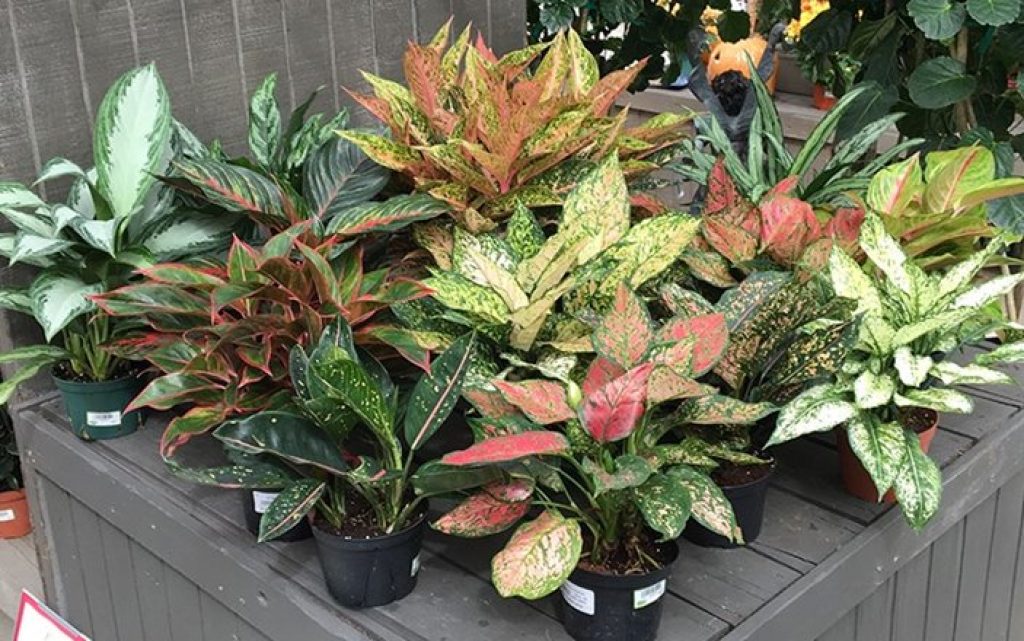Aglaonema or Chinese evergreens are poisonous to cats, dogs, and horses. What makes them toxic, and how can you protect them if you have cats?
Chinese evergreen or Anglaonema refers to a genus of tropical and subtropical flowering plants belonging to the arum family, Araceae (aroids or arum) native to New Guinea and Asia. Other plants in this family Araceae include philodendron, laceleaf, the heart of Jesus, Monstera, Taro, Dumb canes, Elephant ears, Jack-in-the-pulpit, Calla lily, and Swiss cheese plant.

As already mentioned, Chinese evergreen is toxic to cats and dogs and cats. Its toxicity is due to insoluble calcium oxalate, which, as ASPCA puts it, will cause “oral irritation, pain, and swelling of mouth, tongue, and lips, excessive drooling, vomiting (not horses), difficulty swallowing.”
Besides cats, the Aglaonema species are also poisonous to humans. If you ingest it, you will suffer from mucous membrane irritation, and its sap will irritate your skin and result in painful rashes.
Protecting cats from the Chinese evergreen
From green leaves with red rims to pink veined to patterned or variegated varieties in various colors, including creamy white, silvery grey, and so on, the showy, colorful leaves or foliage of the different cultivars and varieties of Aglaonema are irresistible. They will add charm to your indoor décor and look fabulous in your garden.
Some people also consider them as luck-bringing ornamental plants, and a species like Aglaonema modestum is known to help remove benzene and formaldehyde air toxins from households. The reasons to have this plant are endless.
However, since Chinese evergreen isn’t safe for cats, the best way to avoid accidental ingestion is not having it. However, if you already have it or you would like to buy it, here are ways to prevent ingestion by your cats:
- Plant them inside a plant terrarium. A glass or mesh will ensure it remains visible while preventing access by your kitties. You can also use a needlepoint mesh.
- Buy non-toxic and pet-friendly repellents. A good bet is the PetSafe SSSCAT Spray Dog and Cat Deterrent, Motion Activated Pet Repellent, as it is environmentally friendly too. You could also try home remedies such as using lemon sprays or placing lemon peels inside the grower, spraying it with cayenne pepper, and so on.
- Place your Anglaonema in places your cats rarely go. In such rooms, the chances of your feline eating the plant are minimal.
- Provide them alternative safe plants. Many best cat kinds of grass will help satisfy the urge of cats eating greeneries.
- Reduce boredom as it tends to increase the chances of your cat eating non-typical food materials.
- Train them not to eat plants. Cats are trainable to use their litter boxes, walk on a leash, avoid eating certain things or plants, etc.
- If you are growing them outside in your garden, backyard, and so on, try deterrents such as Llfaiww Dog Repellent, Ultrasonic Animal Repellent with Motion Sensor, and Flashing Lights Outdoor Solar Powered Waterproof Farm Garden Yard Repellent.
The above and what we didn’t mention these and other ways that may help keep cats off your houseplants or from your garden or flowerbeds.
Conclusion
Besides their alluring appeal, Chinese evergreens are easy to propagate (cuttings or dividing basal shoots), easy to maintain so long as you avoid extreme coldness or excessive sunlight, making them a good houseplant choice.
However, if you have dogs, cats, or horses, we would encourage you to protect them with a plant terrarium or opt for pet-friendly gardens and houseplants.
Finally, if you suspect your cats has eaten aglaonema, check for signs such as drooling, pawing, oral pain, swallowing difficulties, vomiting, and reduced appetite. Talk to your vet if you notice any of these symptoms or call any animal poison helpline.
